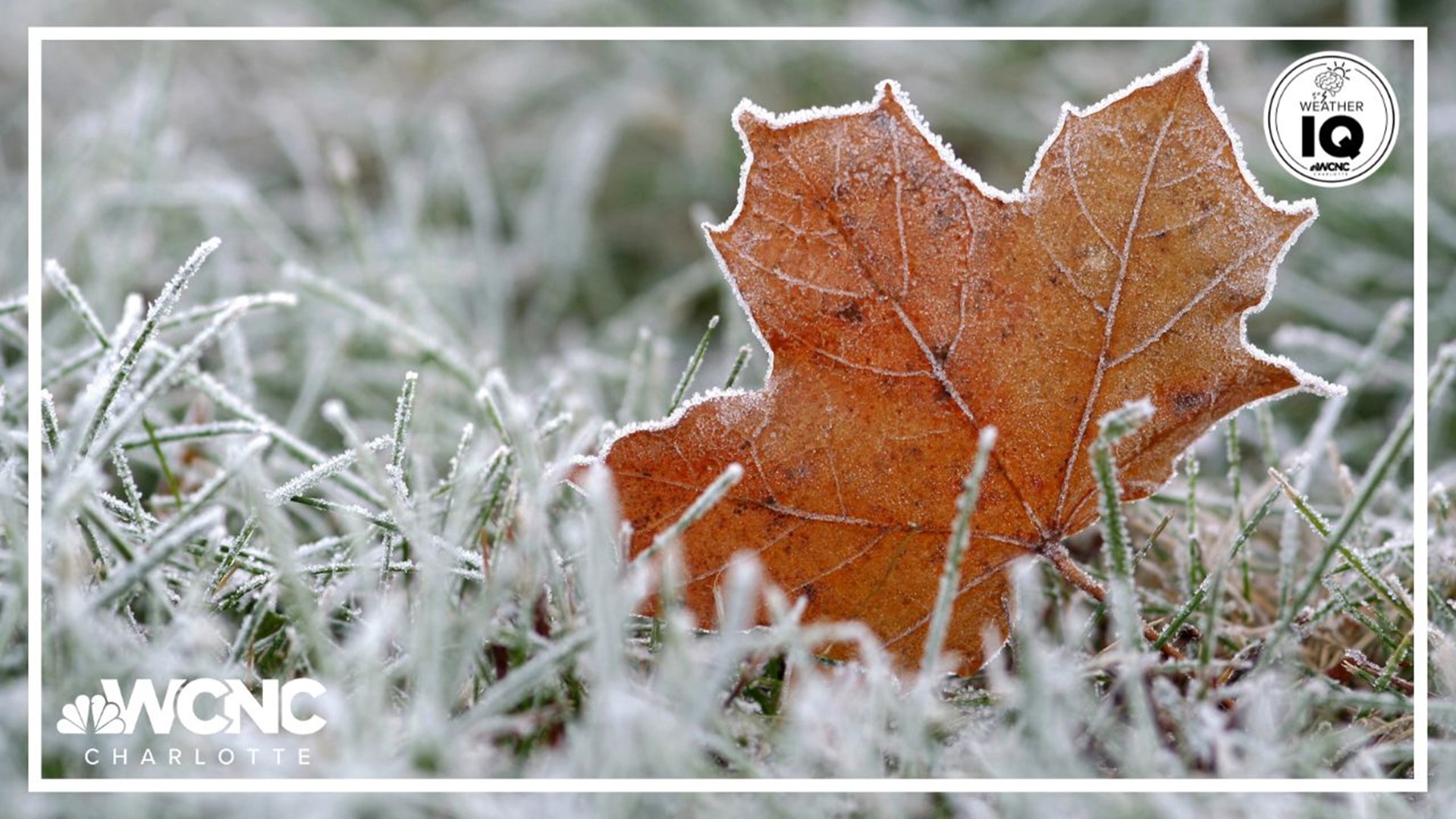CHARLOTTE, N.C. — Frost forms when water vapor deposits onto a freezing surface, causing a thin layer of ice to form. This occurs most often during autumn and winter -- when the nights are long, allowing more time for temperatures to cool.
A perfect weather set up for frost includes:
- Calm winds
- A clear sky
- Moisture in the air and on the ground
- Cold air
Even though the air needs to be cold, frost can form even when your thermometer is well above 32 degrees. That’s because temperature sensors are typically five feet or more above the ground.
This includes at-home weather stations, as well as official sensors used by the National Weather Service. Charlotte’s data comes from the sensor at Charlotte Douglas International Airport.
The coldest air, allowing for frost to form, sits right at the surface below those sensors.


How does frost form?
At night, heat radiates away from the ground, allowing for the temperature to drop quickly. In the absence of wind, cold air settles close to the surface because this type of air is most dense.
If the surface temperature and the dew point match, relative humidity will be 100%. We refer to this as reaching the "frost point."
For the latest weather alerts, download the WCNC Charlotte mobile app and enable push notifications.
This means there is enough moisture present to create those delicate ice crystals. In the South, this is most commonly seen on things like cars, windows, roofs, and grass.
This "surface temperature" ranges but is typically five degrees cooler than the ‘measured’ temperature on the ground.
For example, if the surface temperature is 32 degrees, the measured temperature on the data sensor may say 37 degrees.
This is why you may hear the WCNC Charlotte weather team refer to 37 degrees as the "magic number" for frost.
Local topography also plays a role in where and when frost develops. Valleys are often shielded from the highest winds and cold air settles there due to its high density. These areas of the mountains and foothills are most prone to the icing.
Other than needing a few minutes to scrape your windshield, frost is relatively harmless for most folks in the Carolinas -- but it can impact agriculture.
This is why the NWS issues frost advisories during the growing season. Most years, the growing season ends for the Charlotte region by the second week of November.
Forecast this week
There are multiple opportunities for frost or freeze conditions this week. This is on par with the average, because Charlotte typically experiences its first frost or freeze between the last week of October and first week of November.
Contact Brittany Van Voorhees at bvanvoorhe@wcnc.com and follow her on Facebook, X and Instagram.
WCNC Charlotte’s Weather IQ YouTube channel gives detailed explainers from the WCNC Charlotte meteorologists to help you learn and understand weather, climate and science. Watch previous stories where you can raise your Weather IQ in the YouTube playlist below and subscribe to get updated when new videos are uploaded.

